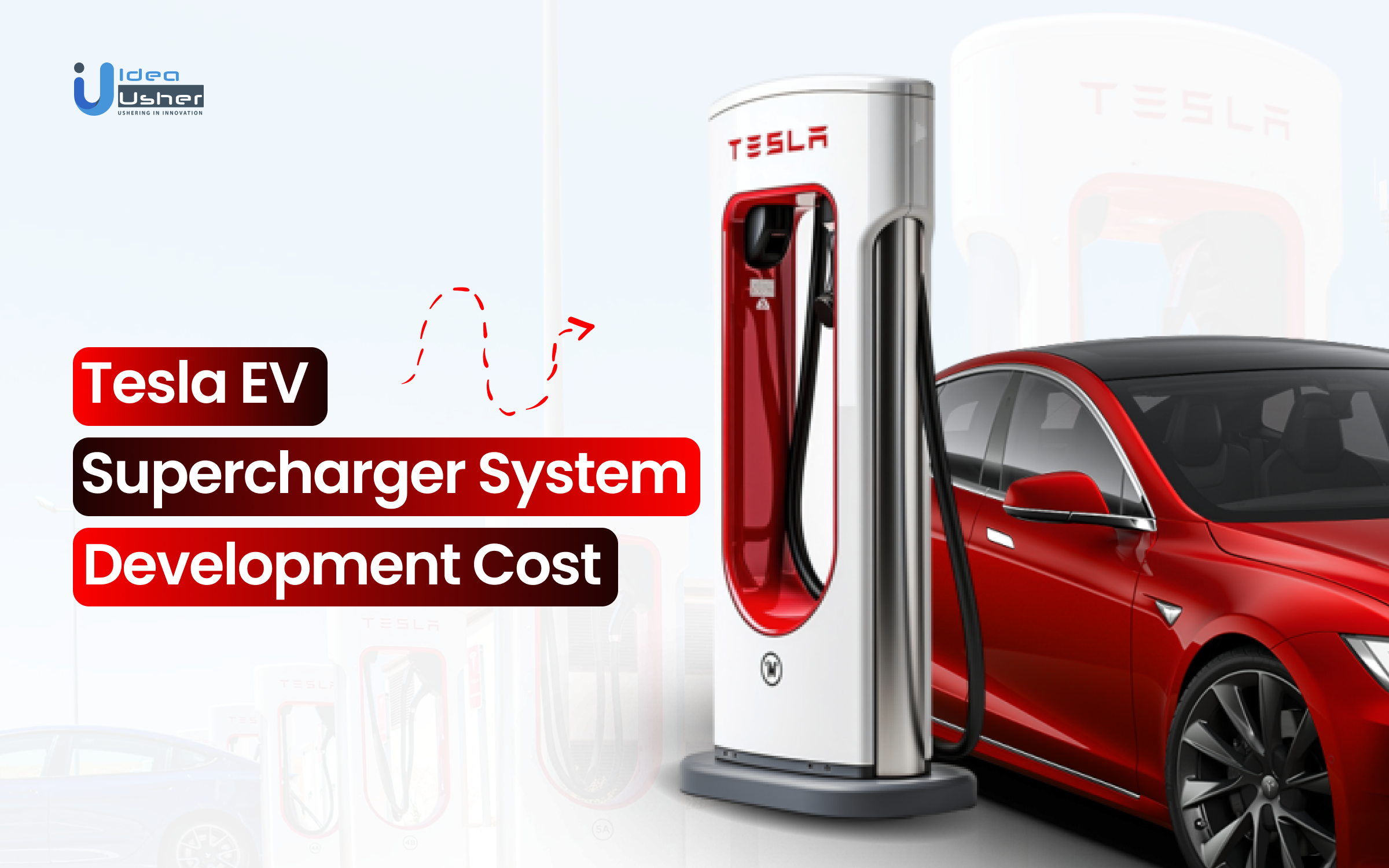Tesla’s EV Supercharger network has been key to the company’s success. It provides owners with the convenience and reliability they need. This helps support the growing adoption of electric vehicles. Since it started in 2012, Tesla has worked to expand its network. Today, it has over 45,000 Superchargers around the world. This network plays a big role in solving the challenges of range anxiety and long charging times. It also presents a great opportunity for business owners and entrepreneurs to get involved by installing public chargers. But faster solutions are becoming essential with L1 and L3 chargers being slow and taking hours to charge an EV.
That’s where L3 chargers come in. These chargers, like Tesla’s Superchargers, are much faster. They can charge EVs in a fraction of the time compared to L1 and L2 chargers. This makes L3 stations more appealing to consumers and crucial for the future of EV adoption. Building and growing Tesla’s Supercharger network is expensive.
In 2020, Tesla spent about $1.4 billion on its Supercharger infrastructure. This includes everything from building the stations to installing hardware and developing software. Each Supercharger stall can bring in around $50,000 in revenue each year.
In this article, we’ll break down what you need to know about developing an EV charging system like Tesla’s Supercharger. Let’s start!
Tesla’s Supercharger Network: The Gold Standard in EV Charging
Tesla’s Supercharger network is the benchmark for fast EV charging. Over the years, EVs and charging infrastructure have evolved, with Tesla setting the standard for speed, reliability, and user experience. Here’s why Tesla’s Supercharger network stands out and how you can develop a similar system:
EV Charging Levels: L1 vs. L2 vs. L3
Charging speeds depend on the level of power and current:
- Level 1 (L1): Slowest, using a standard 120V outlet. Best for overnight charging of short-range EVs. Full charge takes 40-50 hours.
- Level 2 (L2): Common in homes and public stations, using a 240V outlet. Charging speed is better but still too slow for long trips, with a full charge taking 4-10 hours.
- Level 3 (L3): Fastest, using 480V+ DC power. This is the domain of Tesla’s Superchargers, offering 200-1,000+ miles per hour of charging, with a full charge in 20-90 minutes.
Why L3 is the future: It’s 5-20x faster than L2, crucial for long-distance EV adoption, and Tesla has proven its scalability.
Why is Tesla’s Supercharger the Benchmark?
Tesla doesn’t just offer fast chargers—it combines smart technology and seamless user experience:
- Fast Charging Speeds: Tesla’s V4 Superchargers push 350kW+, giving 200 miles of range in 15 minutes.
- Battery & Thermal Management: Tesla’s software pre-conditions batteries, preventing overheating and ensuring consistent charging speeds in extreme weather.
- Plug & Charge: No need for apps or cards. Tesla uses ISO 15118 for hands-free authentication and secure billing.
- Smart Load Balancing: Power is dynamically distributed between stalls, and Tesla integrates solar and Powerwall for off-grid charging.
- Reliability: With 99%+ uptime, Tesla’s system uses remote diagnostics and OTA updates to reduce downtime.
- Seamless User Experience: Tesla integrates charging with real-time route planning, automatic payments, and transparent pricing.
Key Market Takeaways for EV Supercharger Systems
According to MarketsandMarkets, the global electric vehicle market is growing quickly. It is expected to rise from USD 396.49 billion in 2024 to USD 620.33 billion by 2030. That’s a 7.7% annual growth rate. Improvements in EV technology mainly drive this growth. Better fast chargers and more efficient batteries are making EVs easier and more convenient for consumers.
Source: MarketsandMarkets
At the same time, building a strong charging infrastructure is crucial. It ensures that EVs are suitable for both long trips and everyday use.
EV charging system providers are making important partnerships to improve their services and reach more users. ChargePoint, a leading company, has teamed up with carmakers like BMW and Volkswagen. This allows users to see charging info directly in their vehicle’s navigation system. Tesla’s Supercharger network has also made deals with Ford, General Motors, and Hyundai.
Now, non-Tesla EVs can use their charging stations too! ChargeLab is working with hardware manufacturers like EVBox and Nidec. This ensures that their charging stations are compatible with many types of equipment. These partnerships improve how the systems work together and make the charging experience better. They are also helping to expand the EV charging network, making electric vehicles more widely used.
Work with Ex-MAANG developers to build next-gen apps schedule your consultation now
Understanding Tesla’s Supercharger Software Architecture
Tesla’s Supercharger network is a blend of cutting-edge hardware and smart software. While the ultra-fast charging hardware gets much of the attention, it’s the software that truly powers the system. Tesla’s software optimizes energy use, manages power, and ensures a seamless experience for both drivers and operators.
If you’re thinking about building a Tesla-like EV charging system, understanding this software architecture is key. Here’s a breakdown of the components that make Tesla’s Supercharger network work so smoothly,
1. Real-Time Charging Management (Load Balancing & Power Distribution)
Tesla’s software allocates power in real-time based on factors like:
- The number of vehicles charging at once
- The battery state and the required charging speeds
- Grid capacity and energy costs
This dynamic management prevents overloading the power grid and ensures each car charges at the optimal speed. It can even use AI-driven predictions for smarter energy use, helping optimize the system as demand fluctuates.
2. User Authentication & Payment Processing
Tesla makes charging easy by supporting:
- App-based authentication through the Tesla account
- Plug-and-charge technology, compliant with the ISO 15118 standard
- Seamless payment processing with automated billing.
A frictionless user experience leads to higher adoption rates. Multiple payment options like RFID, credit cards, and subscription models help cater to a wide range of users. Plus, secure tokenization helps prevent fraud, offering peace of mind for both users and operators.
3. Remote Monitoring & Diagnostics (Predictive Maintenance & OTA Updates)
Tesla continuously monitors several factors:
- Charger health (temperature, voltage fluctuations)
- Network uptime (real-time outage detection)
- Firmware updates (delivered Over-The-Air)
Predictive maintenance helps reduce costs by identifying potential issues before they happen. It also ensures a nearly perfect uptime (99%+), which is critical for commercial charging networks. Plus, Over-The-Air updates save time and eliminate the need for manual intervention.
4. Energy Optimization & Grid Management
Tesla integrates various energy management strategies:
- Renewable energy sources like solar panels and Powerwall storage
- Demand-response algorithms that charge when electricity is cheapest
- Vehicle-to-Grid capabilities, preparing for future needs
Using off-peak energy helps lower operational costs, while renewable energy sources make your network greener. This boosts your brand’s reputation and helps future-proof your system as V2G adoption becomes more common.
5. Data Analytics & Fleet Management
Tesla collects a lot of data:
- Charging session details (how long each session lasts, how much energy is used)
- User behavior patterns (when and where users typically charge)
- Hardware performance (how efficient the chargers are over time)
Leveraging this data allows you to make informed decisions that improve network efficiency. You can predict future demand, plan expansions strategically, and even offer personalized experiences or promotions to users, keeping them engaged and satisfied.
Cost of Developing an EV Supercharger System Software like Tesla
| Component | Estimated Cost Range ($) | Key Features Included | Why It’s Important |
| Backend Development (Cloud, APIs) | 15,000 – 40,000 | – Cloud hosting (AWS/Azure)- RESTful API development- Database management | Ensures scalability, real-time communication, and data storage for charging sessions. |
| Mobile/Web App Integration (User & Admin Panel) | 10,000 – 30,000 | – User app (charging control, payments)- Admin dashboard (analytics, remote control) | Critical for user experience and network management. |
| Charging Station Firmware (IoT, OTA updates) | 8,000 – 25,000 | – Embedded software for chargers- Over-the-air (OTA) update capability | Ensures hardware-software sync and future-proofing. |
| Payment Gateway Integration | 5,000 – 15,000 | – Stripe/PayPal integration- RFID/App-based payments | Secure, seamless transactions = higher user trust. |
| Data Analytics & AI Optimization | 7,000 – 20,000 | – Demand prediction- Energy usage reports | Helps optimize charging costs and station placement. |
| Cybersecurity & Compliance (ISO 15118, OCPP) | 5,000 – 15,000 | – Encryption, secure authentication- OCPP compliance for interoperability | Prevents hacking and ensures industry-standard compliance. |
| Third-Party Integrations (Maps, Energy Providers) | 5,000 – 12,000 | – Google Maps API for station locator- Utility company data sync | Improves user convenience and grid management. |
| Testing & Deployment (QA, Load Testing) | 5,000 – 15,000 | – Bug fixing, performance tuning- Scalability stress tests | Avoids costly failures post-launch. |
| Total Estimated Cost | 10,000 – 100,000 | Covers core features and scalability for efficient EV charging software. |
Factors Affecting the Cost of Developing a Tesla EV Supercharger System
Building an EV Supercharger system like Tesla’s is a complex project. Several key factors beyond the usual software development challenges influence the cost. Here are the main things that affect the price of developing software for a system like Tesla’s.
1. Charging Protocol & Compatibility Requirements
Tesla uses its own closed system. This makes things simpler and cheaper. But, it also limits flexibility with other systems. If you want to use open standards like Plug & Charge, it adds extra testing and compliance costs.
2. Energy Load Management Complexity
Tesla’s software balances power dynamically across multiple chargers in real-time. This ensures chargers don’t overload the grid. Basic systems just use fixed power per charger, which costs less but is less efficient. Smart systems with AI-driven adjustments and integration with the grid to respond to pricing are more expensive but also more efficient.
3. Over-the-Air Update Capability
Tesla offers over-the-air updates. This means the software on thousands of chargers can be updated remotely. For this to work, you need a secure and reliable system. Basic systems might use manual updates which cost less. But adding OTA capability requires more development and increases costs.
4. Proprietary vs. Third-Party Hardware Integration
Tesla makes both its hardware and software. This makes integration easier and reduces compatibility issues. If you use third-party chargers, the software must be flexible enough to handle different versions of firmware, communication protocols, and power delivery specs. This adds complexity and increases costs.
5. User Authentication & Billing Systems
Tesla’s Plug & Charge system is seamless but requires advanced security infrastructure. This increases costs. Simpler systems like app-based or RFID authentication are cheaper but less seamless. Adding dynamic pricing models like peak/off-peak or membership discounts also makes the billing system more complex and expensive.
6. Renewable Energy & Battery Storage Integration
Tesla pairs its Superchargers with solar power and Powerpack batteries. If your system integrates renewable energy, the software needs to manage and optimize charging times based on available energy. This requires additional algorithms and development. Also, preparing for future Vehicle-to-Grid or Vehicle-to-Home capabilities increases the cost.
7. Real-Time Diagnostics & Predictive Maintenance
Tesla’s software predicts and fixes issues before they cause downtime. This reduces maintenance costs. Basic systems rely on reactive maintenance, which is cheaper but causes more disruptions. More advanced AI-driven diagnostics and predictive maintenance systems cost more but make the system more reliable in the long run.
How to Reduce Development Costs Without Compromising Quality?
Reducing the cost of developing EV supercharger system without losing quality comes down to using smart strategies. Here’s a breakdown of how you can keep costs down and still build something close to Tesla’s Supercharger system:
1. Use Open Charging Standards
Instead of building everything from scratch like Tesla’s closed-source software:
- Adopt OCPP (Open Charge Point Protocol): This saves you months of development time, letting you focus on customization rather than reinventing the wheel.
- Leverage ISO 15118 for Plug & Charge: Avoids the costly task of creating secure authentication protocols from the ground up.
- Use Open-Source Backends (e.g., SteVe, EVerest): Open-source platforms can significantly reduce backend costs, making the system easier to scale without steep expenses.
Cost Impact: You could save significantly by using open standards instead of proprietary systems.
2. Start with an MVP
Rather than trying to replicate Tesla’s full-featured system right away, you can phase the development to introduce new features gradually:
- Phase 1: Build basic charging and payments functionality first.
- Phase 2: Add load balancing and over-the-air (OTA) updates in the next phase.
- Phase 3: Finally, introduce AI-driven optimization and vehicle-to-grid (V2G) functionality, which can be added when demand and funding justify it.
Cost Impact: Launching a basic MVP with OCPP compliance could allow you to scale as needed, saving considerable resources initially.
3. Optimize Energy Management
Tesla uses AI for dynamic load balancing, but early-stage systems can use simpler methods:
- Rule-Based Algorithms: Instead of machine learning, you can implement rules-based load balancing, which is significantly cheaper.
- Use Existing Grid APIs: Integrate with existing energy management platforms instead of building custom logic from scratch.
- Delay V2G/Battery Buffering: This feature can be deferred until there’s sufficient demand to justify its cost.
Cost Impact: By avoiding custom AI and relying on simpler solutions, you can save a significant amount on development.
4. Use Modular Firmware (Avoid Full Custom Development)
Tesla designs proprietary firmware for each of its chargers, but there are alternatives:
- Pre-built EVSE Firmware (e.g., ChargePoint’s SDK) can be used to avoid developing from scratch.
- Leverage IoT Platforms like AWS IoT Core or Particle to manage over-the-air updates.
- Partner with Hardware Vendors who offer pre-tested software stacks, which can reduce embedded development work.
Cost Impact: This approach can save on embedded development costs, which can be substantial.
5. Outsource Non-Core Components
While Tesla handles everything internally, startups can save significantly by outsourcing some functions:
- Use Stripe or PayPal for Payments instead of building custom payment systems.
- Integrate Third-Party Maps like Google Maps API rather than creating a custom navigation solution.
- Leverage Cloud-Based Analytics such as AWS QuickSight for analytics, rather than developing your own dashboard solution.
Cost Impact: These integrations could save you a good amount, freeing up resources for other areas.
Conclusion
Developing software for an EV supercharger system requires a large initial investment. However it has great potential for long-term revenue. Charging fees are a direct source of income. You can also offer subscription models for premium features and provide data-driven grid optimization services. To succeed it’s important to focus on scalability, reliability, and making the user experience smooth. This creates a valuable infrastructure that supports the growing EV market. It builds brand loyalty and ensures steady revenue. In the end it helps speed up the shift toward sustainable transportation.
Looking to Develop an EV Supercharger System like Tesla?
At Idea Usher, we can help you create a high-performance, scalable, and reliable EV charging solution tailored to your needs. With over 500,000 hours of coding experience, our team of ex-MAANG/FAANG developers brings expert knowledge to build a seamless, user-friendly charging infrastructure. We focus on optimizing performance and scalability and integrating innovative features for a sustainable future.
Check out our latest projects to see the kind of exceptional work we can do for you!
Work with Ex-MAANG developers to build next-gen apps schedule your consultation now
FAQs
Q1: How to develop an EV supercharger system?
A1: To develop an EV supercharger system, you first need to set up a network of charging stations that can charge cars quickly. Choose reliable chargers and smart connectors. For the software, you’ll need an easy-to-use platform where users can find stations and track their charging. Make sure it’s scalable and works well with different electric vehicles.
Q2: What is the cost of developing an EV supercharger system?
A2: The cost of developing an EV supercharger system depends on things like where you’re building the stations and how many chargers you want. There are costs for the hardware, the software, and ongoing maintenance. Custom features like apps or smart tech can also increase the overall cost.
Q3: How does an EV supercharger system work?
A3: An EV supercharger system works by providing fast charging for electric vehicles at different stations. Users plug their cars into the charger and get a quicker charge than regular home chargers. The system uses software to track the charging status and helps users find available stations nearby.
Q4: What are the features of an EV supercharger system?
A4: An EV supercharger system usually includes fast charging, real-time updates on charging status, and a user-friendly app to find nearby stations. It may also let users pay through the app or even reserve charging spots. Some systems offer smart grid integration and remote monitoring to keep everything running smoothly.






















